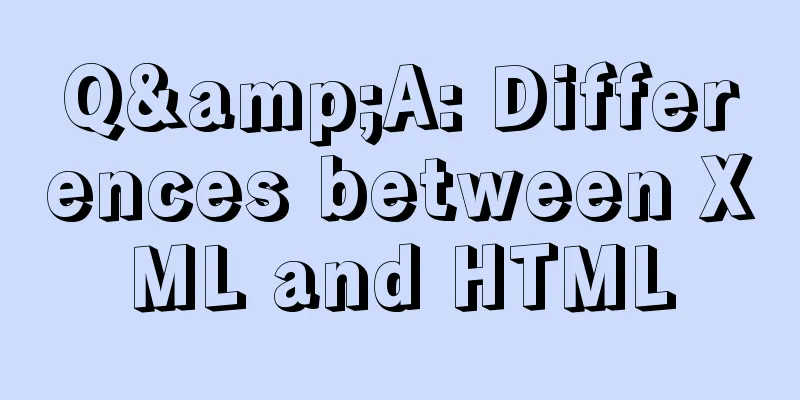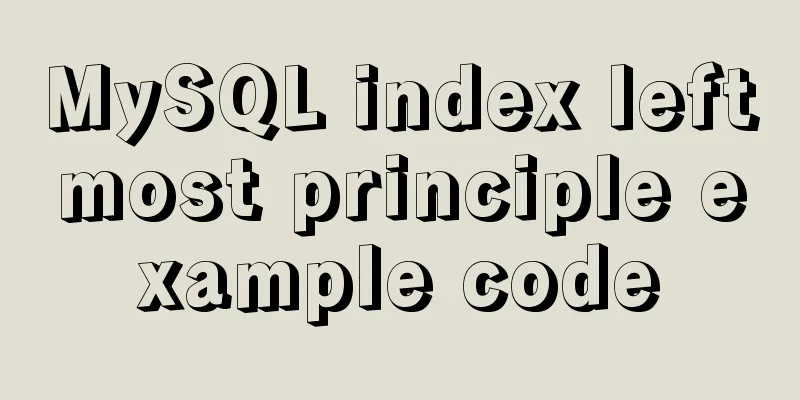Q&A: Differences between XML and HTML

|
Q: I don’t know what is the difference between xml and html? What are the differences? A: For the difference between XML and HTML, please refer to: http://www.w3c.org/MarkUp/ http://www.w3c.org/ XML / Extensible Markup Language ( XML ) provides a way to describe structured data. Unlike HTML tags, which are used primarily to control the display and appearance of data, XML tags are used to define the structure and data type of the data itself. XML uses a set of tags to describe data elements. Each element encapsulates data that can be quite simple or quite complex. You can define an unlimited set of XML tags. For example, you can define some XML tags to declare the data in the order, such as price, tax, shipping address, billing address, and so on. As XML markup is adopted throughout and across organizations, data from a variety of different data stores will be more easily exchanged and manipulated. XML is a simple, platform-independent, and widely adopted standard. The advantage of XML over HTML is that it separates the user interface from the structured data. This separation of data and display makes it possible to integrate data from different sources. Customer information, orders, research results, bill payments, medical records, catalog data, and more can all be converted to XML . XML vs HTML Here are a few key points to remember about the relationship between XML and HTML: a.. XML is not intended to replace HTML; in fact, XML can be seen as a supplement to HTML. The goals of XML and HTML are different: HTML is designed to display data and focuses on the appearance of data, while XML is designed to describe data and focuses on the content of data. b.. Similar to HTML, XML does nothing. While XML tags can be used to describe the structure of an item such as an order, it does not contain any code that can be used to send or process that order and ensure that it is delivered. Someone else has to write the code to actually perform these operations on the XML- formatted data. c.. Unlike HTML, XML tags are defined by the author of the schema or document and are unrestricted. HTML tags are predefined; HTML authors can use only those tags supported by the current HTML standard. Use of XML XML is an extremely flexible way to transfer data. The following are all examples of situations where XML can be used: a.. Ordinary documents b.. Structured records, such as appointment records or orders c.. Internet/Intranet Web applications that move data d.. Objects with data, such as objects or ActiveX controls in a persistent format e.. Data records, such as the result set of a query f.. Meta-content for a Web site, such as the Channel Definition Format (CDF) g.. A graphical display, such as an application's user interface h.. Links to information and people on the Web i.. C# code (optionally in XML form); see XML Documentation for more information j.. A discovery document used to locate available XML Web services; see XML Web Services Discovery for more information. Here are some advantages of XML over other formats for storing information: a.. XML formats are text-based, which makes them easier to read, easier to document, and sometimes easier to debug. b.. XML documents can use much of the infrastructure already established for HTML, including the HTTP protocol and some browsers. HTTP allows XML to be transmitted through firewalls. c. XML parsing is well defined and widely used, making it possible to retrieve information from XML documents in a variety of environments. d.. Applications can rely on XML parsers to perform certain structural validation and data type checking (when using a schema). e.. XML is built on Unicode, making it easier to create internationalized documents. However, XML is not suitable for all situations. XML documents tend to be more verbose than the binary formats they replace. They take up more network bandwidth and storage space, or require more processor time to compress. XML parsing may be slower than parsing highly optimized binary formats, and may require more memory. However, careful application design can avoid some problems. Validating XML documents <br />To validate that an XML document contains the required data and structure, you must associate an XML schema with the XML document. XML Schema is a set of rules that defines how elements and attributes are structured to form an XML document. You can share schemas between organizations to make it easy to transfer and process shared data. For more information, see Introduction to XML Schema. Displaying XML data <br />There are several ways to display (or provide) XML data. There are also data binding mechanisms that can be used with style sheets to present XML data in a visual form and to add interactivity. Here are a few ways to display XML : a.. XSLT — Extensible Stylesheet Language b.. CSS — Cascading Style Sheets c.. Microsoft Internet Explorer For more information, see the MSDN Online XML Developer Center Web site (http://msdn.microsoft.com/xml/default.asp). XML Resources If you are familiar with HTML, you can learn to create XML documents, as long as they are valid and well-formed. For more information about XML , see the XML SDK and the MSDN Online XML Developer Center Web site (http://msdn.microsoft.com/xml/default.asp). For more information, see the World Wide Web Consortium (W3C) XML specification ( http://www.w3.org/XML/ ). Q: Why do many large websites still use HTML instead of XML? A: XML and HTML are essentially different. You said that large sites use HTML. If it is static data, HTML is of course the fastest, but it is difficult to maintain! XML CSS is generally used for site design, but XML CSS has great limitations, so it is better to use XML XSLT Q: Now I develop a website directly using XML, and then upload it directly to the ordinary static space provided now, will it be displayed? A: If you can assume that your users are using (or at least have installed) IE6 then there is no problem. If the user uses other browsers, the XML -> HTML conversion should be performed on the server side, which is not supported by ordinary static space. You can choose ASP or PHP space that supports XML DOM. Therefore the operating environment is different. |
<<: How to use Docker to build a pypi private repository
>>: Sharing some details about MySQL indexes
Recommend
Win7 installation MySQL 5.6 tutorial diagram
Table of contents 1. Download 2. Installation 3. ...
A brief understanding of the difference between MySQL union all and union
Union is a union operation on the data, excluding...
Sample code for CSS dynamic loading bar effect
Using the knowledge of CSS variables, I will dire...
Optimization analysis of Limit query in MySQL optimization techniques
Preface In actual business, paging is a common bu...
HTML table markup tutorial (28): cell border color attribute BORDERCOLOR
To beautify the table, you can set different bord...
Examples of adding, modifying, deleting and clearing values in MySQL database
3. MySQL Data Management The first method: not re...
Detailed operations of building RabbitMq's common cluster and mirror cluster with Docker
Table of contents 1. Build the operating environm...
Vue implements form data validation example code
Add rules to the el-form form: Define rules in da...
CSS and HTML and front-end technology layer diagram
Front-end technology layer (The picture is a bit e...
Detailed explanation of MySQL date string timestamp conversion
The conversion between time, string and timestamp...
Take you to understand MySQL character set settings in 5 minutes
Table of contents 1. Content Overview 2. Concepts...
Several popular website navigation directions in the future
<br />This is not only an era of information...
Detailed explanation of Vue transition effects and animation transition usage examples
Table of contents transition hook function Custom...
Vue implements image drag and drop function
This article example shares the specific code of ...
JavaScript canvas to achieve scratch lottery example
This article shares the specific code of JavaScri...









